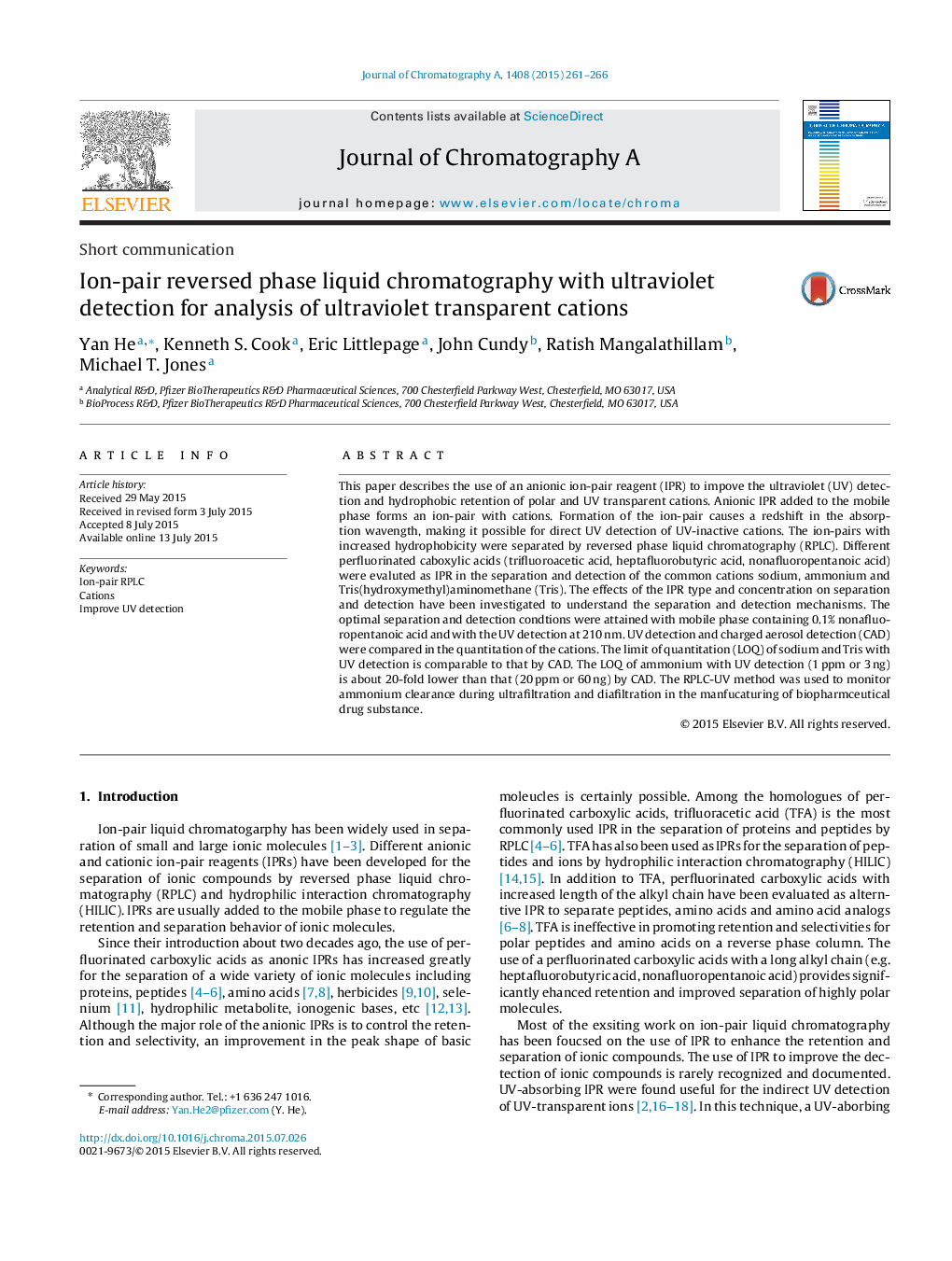| Article ID | Journal | Published Year | Pages | File Type |
|---|---|---|---|---|
| 7611705 | Journal of Chromatography A | 2015 | 6 Pages |
Abstract
This paper describes the use of an anionic ion-pair reagent (IPR) to impove the ultraviolet (UV) detection and hydrophobic retention of polar and UV transparent cations. Anionic IPR added to the mobile phase forms an ion-pair with cations. Formation of the ion-pair causes a redshift in the absorption wavength, making it possible for direct UV detection of UV-inactive cations. The ion-pairs with increased hydrophobicity were separated by reversed phase liquid chromatography (RPLC). Different perfluorinated caboxylic acids (trifluoroacetic acid, heptafluorobutyric acid, nonafluoropentanoic acid) were evaluted as IPR in the separation and detection of the common cations sodium, ammonium and Tris(hydroxymethyl)aminomethane (Tris). The effects of the IPR type and concentration on separation and detection have been investigated to understand the separation and detection mechanisms. The optimal separation and detection condtions were attained with mobile phase containing 0.1% nonafluoropentanoic acid and with the UV detection at 210Â nm. UV detection and charged aerosol detection (CAD) were compared in the quantitation of the cations. The limit of quantitation (LOQ) of sodium and Tris with UV detection is comparable to that by CAD. The LOQ of ammonium with UV detection (1Â ppm or 3Â ng) is about 20-fold lower than that (20Â ppm or 60Â ng) by CAD. The RPLC-UV method was used to monitor ammonium clearance during ultrafiltration and diafiltration in the manfucaturing of biopharmceutical drug substance.
Keywords
Related Topics
Physical Sciences and Engineering
Chemistry
Analytical Chemistry
Authors
Yan He, Kenneth S. Cook, Eric Littlepage, John Cundy, Ratish Mangalathillam, Michael T. Jones,
